
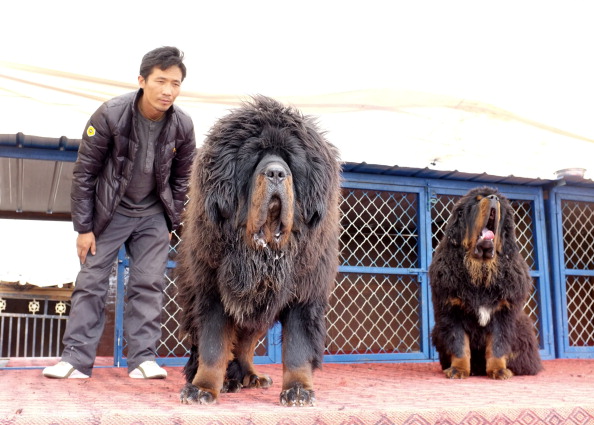
This is the Tibetan Mastiff, the World's Most Expensive Dog, But Are We Sure It Isn't Just a Bear?
By Petr Navovy | Miscellaneous | April 6, 2018 |
By Petr Navovy | Miscellaneous | April 6, 2018 |

I love animals. I love cute ones like the pacarana. I love the weird ones too, those aberrations like the coconut crab and the huntsman spider that blur the line between wonder and horror.
But more than anything I love dogs. If you made a list of Top 10 Things In The World, alongside things like music, sex, coffee, and trees, you’d have dogs. In fact, let’s be honest: Dogs would probably be at the top of the list. Big dogs are the best. I grew up with a few German Shepherds, and from an early age, I could tell that there was just something incredibly beguiling about big dogs. Maybe it’s because the bigger they get the more they start to resemble their ancestors, and there is a curious juxtaposition between our genetic memory and the reality we see before us now. Because deep down we remember those dark nights spent huddling in the pool of light cast by our fires in the woods, spears pointed outwards lest the twinkling lights out in the black resolve into snarling jaws. We knew what prowled out there. Then, somehow, over countless generations, we made those unknowable creatures our best friends. Where once they thirsted for our blood they now wanted nothing more than to please us, to love us unconditionally. So to see something like a German Shepherd, so reminiscent of its vicious forebear, give you a look so warm that it could thaw a glacier—well, it’s a helluva feeling. Yes indeed: Big dogs are the best. Near-wolves the best of them.
But you know what else is great?
Near-bears!
Say hello to the Tibetan Mastiff.
The Tibetan Mastiff, also commonly known as the Dok-Khyi, is a large dog breed originating in the nomadic tribes of Tibet, China, Mongolia, Nepal, and India, where it has been in use for thousands of years. Typically it lives to be between 9-15 years old, and can weigh up to 72kg. It is called a ‘mastiff’ but it does not actually belong to that group of dog breeds. Like many things, the name originates from Europeans cocking things up: They, upon arriving in Tibet and seeing these large dogs just termed it so, simply because they were used to calling many of their bigger breeds mastiffs.
The Tibetan Mastiff is a working dog, utilised by its owners to protect their flocks of sheep. Protect against what? Foxes? Nah. Just wolves and leopards. Bears. Tigers. That kinda thing.
This is one of those times where you read a fact about an animal, and you’re like: ‘Yeah. Sure. But, really?’
And then you see a picture of the animal again and it makes it that much more believable.
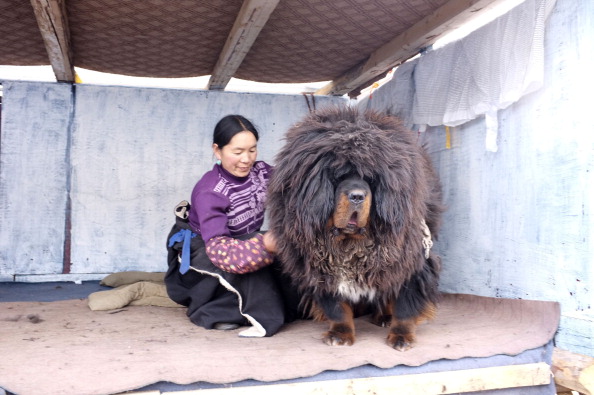
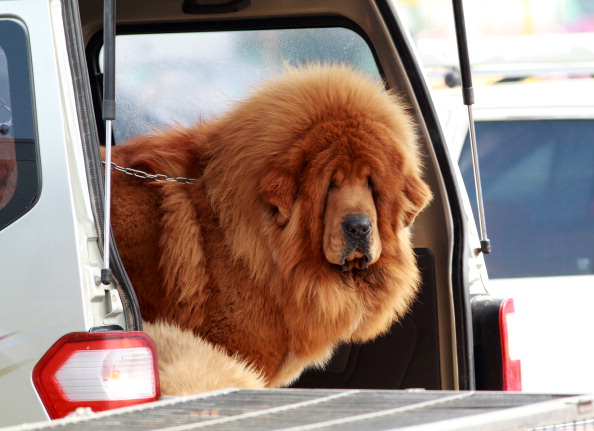
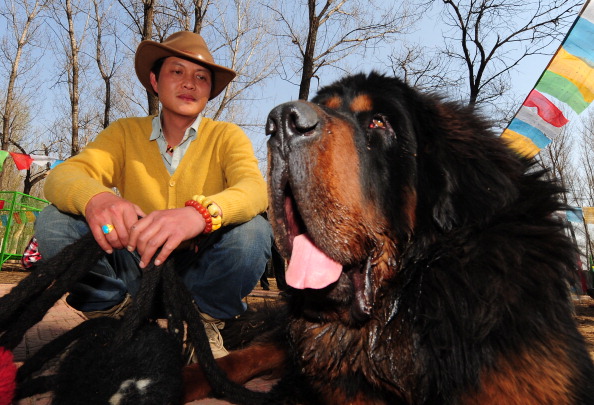
Tibetan Mastiffs are extremely loyal and territorial. Which, I mean, they gotta be, right? To do what they do. Ain’t nobody asking a flaky Cocker Spaniel to stare down a tiger. The breed also remains very healthy in older age, especially when compared to other large breeds, and their magnificent coat sheds only moderately, twice—once in Spring, and once in Autumn. Naturally, being the size that they are, Tibetan Mastiffs require a lot of space. And exercise. If you plan on getting one, it might be a good idea to have at least a steppe or two of space for them to run around in, and maybe a bear or two for it to hunt. That sounds expensive, and I’m not sure where one can buy a steppe, but the dogs themselves are pricey too. In the UK, purebred Tibetan Mastiffs go for around £900. Pretty dear, but not maddening. In China, however, where these big dogs are sometimes seen as status symbols, the numbers start to get a bit ridiculous. With a bit of questionable cross-breeding and dog show hyping, some members of the newly rich Chinese set have been dropping high-6/low-7 figures for these dogs.
These two gorgeous creatures, for example, were reportedly sold for a combined total of £1.75m a few years ago:
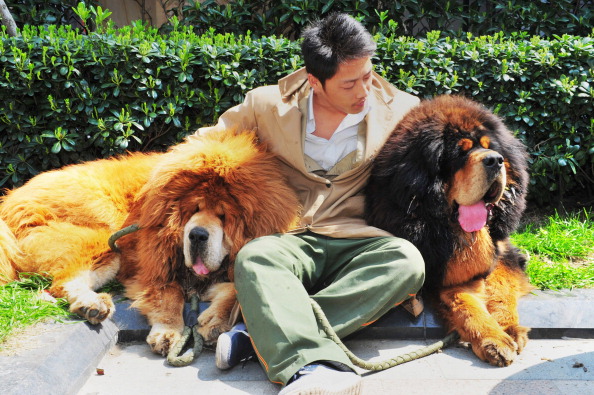
Some dispute the figure, as there seems to be a lack of concrete evidence for that exact amount changing hands. Nevertheless, in 2009, a Chinese coal baron did make a verified purchase of a Tibetan Mastiff called Big Splash, and the amount in question there (£973,000) is formidable too.
Like most capitalist bubbles, however, the Chinese hunger for Tibetan Mastiffs has now apparently collapsed, and has led to the appalling state wherein many of these dogs, previously purchased as trophies, are now being abandoned. As per the Shanghai List:
The hayday of China’s once booming Tibetian mastiff market has come to a close. Previously, this majestic breed was kept by wealthy families as a trendy, rather pricey pet and status symbol — one dog could even be sold for as much as a million yuan. But, recently, interest in the breed has declined dramatically, leading to the abandonment of a significant portion of the country’s overbred mastiff population.
The boom lasted no more than a few years, and the buzz of activity—the fevered buying, ludicrous price spikes, and an explosion in breeders—all led to a sadly predictable end, with the poor, beautiful creatures unwitting cogs in the whole machine. Tibetan Mastiffs really are glorious beasts, and I absolutely want to go rescue all of those abandoned good boys and girls right now. I just gotta figure out how to buy a steppe or two first.
For those interested in learning more, here are two documentaries to watch at your leisure should you so wish:
Pictures courtesy of Getty Images
← Review: John Krasinski's 'A Quiet Place' Is A Master Class in Suspense | Which 'RuPaul's Drag Race' Season 10 Contestant Voted For Donald Trump? →

What’s Old Is New Again: Old Hollywood Glamour Glitters at the 2024 Oscars
Al Pacino Presents Best Picture Oscar, Confuses Everyone
The Dangerous Lie Of 'TradWives'
A Legendary Horror Franchise Is Headed To Television
'The Mandalorian' Season 4 Is Probably Not Happening
Halle Bailey On Why She Chose To Keep Her Pregnancy Private
More Like This
Why All Action Movies Look the Same Now
Please Come Back To Us, Coen Brothers!
Finally, the Taylor Swift Crossover That We All Needed
I Never Thought I'd See 'Shaolin Soccer' Happen in Real Life
If You’re Using AI To Help Write Your Books, You Are Not a Writer
Reviews